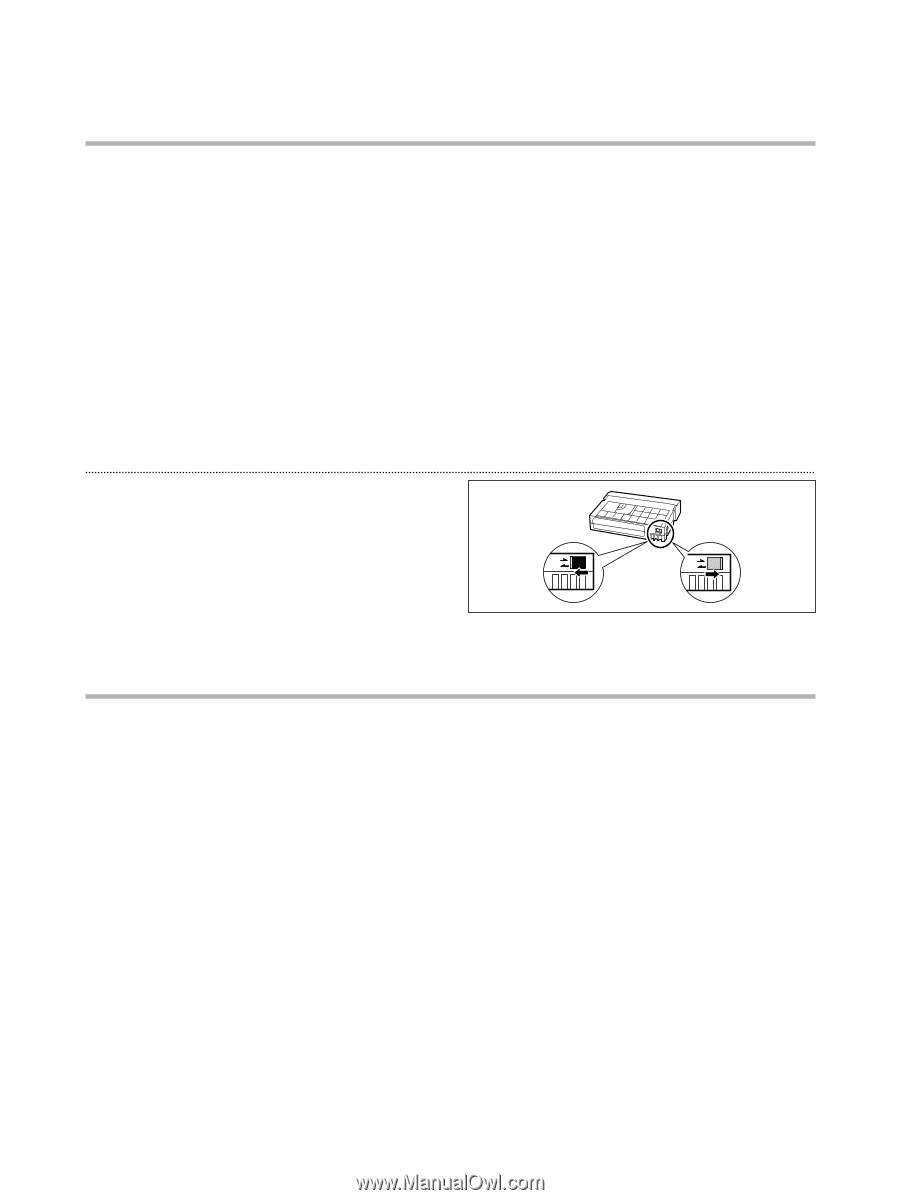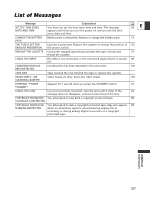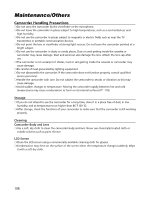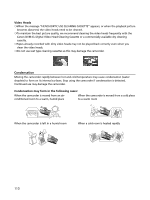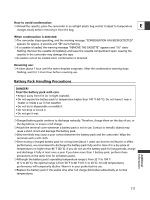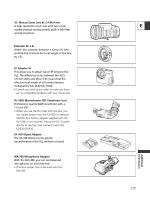Canon XL2 XL2 Instruction Manual - Page 112
Cassette Handling Precautions, Using the Camcorder Abroad - ac power adapter
 |
View all Canon XL2 manuals
Add to My Manuals
Save this manual to your list of manuals |
Page 112 highlights
Cassette Handling Precautions ❍ Rewind tapes after use. If the tape becomes slack and damaged, it may cause picture and sound distortion. ❍ Return cassettes in the case and store them upright. ❍ Do not leave the cassette in the camcorder after use. ❍ Do not use spliced tapes or nonstandard cassettes as they may damage the camcorder. ❍ Do not use tapes that have been jammed as video heads may become dirty. ❍ Do not insert anything into the small holes of the cassette, or cover them with cellophane tape. ❍ Handle cassettes with care. Do not drop or subject them to severe impact as this may damage the cassettes. ❍ Rewind tapes from time to time if they are stored for a long time. ❍ With cassettes equipped with a memory function, metal plated terminals may become dirty with use. Clean the terminals with a cotton swab after about 10 times of loading/unloading. The memory function is not supported by the camcorder. Protecting Tapes from Accidental Erasure To protect your recordings from accidental erasure, slide the tab on the cassette to the left. (This switch position is usually labeled SAVE or ERASE OFF.) If you load a protected cassette in recording REC SAVE REC SAVE mode, the message "THE TAPE IS SET FOR ERASURE PREVENTION" appears for approx. 4 seconds and "v" starts flashing. If you wish to record on that cassette, slide the tab back to the right. Using the Camcorder Abroad Power Sources You can use the compact power adapter to operate the camcorder and to charge battery packs in any country with power supply between 100 and 240 V AC, 50/60 Hz. Consult the Canon Service Center for information on plug adapters for overseas use. Playback on a TV Screen You can only play back your recordings on TVs with NTSC system. The NTSC system is used in the following countries/areas: American Samoa, Antigua, Aruba, Bahamas, Barbados, Bermuda, Bolivia, Canada, Chile, Columbia, Costa Rica, Cuba, Ecuador, El Salvador, Guam, Guatemala, Greenland, Haiti, Honduras, Jamaica, Japan, Korea, Mexico, Micronesia, Myanmar, Nicaragua, Panama, Peru, Philippines, Puerto Rico, Saint Kitts and Nevis, Saint Lucia, Saint Vincent and the Grenadines, Surinam, Taiwan, Trinidad and Tobago, USA, Venezuela, Virgin Islands. 112
